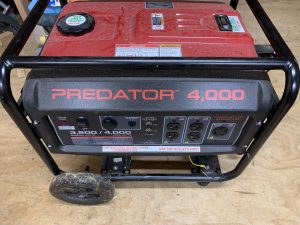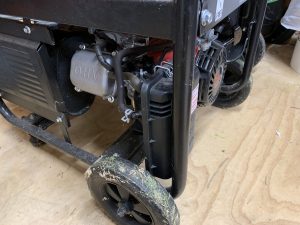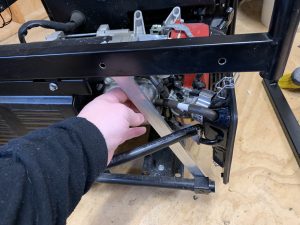I’ve had a cheap Predator generator from Harbor Freight for a few years now. They’re cheap, and handy to have for camping/remote projects like Black Rock, or more locally, keeping the lights on, furnace blowing, and fridge cold if the power goes out at home.
Traditionally, these sorts of inexpensive generators operate on gasoline, which is easy, energy dense, and portable. However, there are downsides to relying on gasoline for backup or infrequent operations. Gas going bad, gathering water, clogging up the carburetor are all day ruining potentials when you’re trying to rely on the system when things have already failed, or there are no other options.
This leaves you in the endless dance of putting fuel stabilizer in, running the engine regularly, making sure that the gas hasn’t gotten too old because you don’t burn very much at a time, choreographing the generator shutdown to eliminate or reduce the amount of gas left in the carburetor.
Fortunately there are other fuels that don’t have the storage/fouling problems, and can with a little bit of adaptation, run in a conventional engine. In this case, we’re talking about propane and natural gas. Propane is easy to find at your local hardware store and many gas stations, you probably already have some for your barbecue grill, and potentially have a larger tank at your house for heating or cooking use already. Natural Gas comes to your home (if you have it), piped underground in effectively unlimited supply, irrespective of whether the hardware store is open, or the power is out. Natural Gas isn’t quite the portable option that Propane is, and is likely a bit harder to tap into your home’s Natural Gas piping, if you have a fixed backup generator, it’s a great potential.
I found a simple kit which adds Propane and Natural Gas capability to my generator, while maintaining the option to use Gasoline. This very much appealed to me as I could still use gasoline if I took the generator portable down to Black Rock or elsewhere, but most of the time at home use Propane for backup services and avoid having the generator sit full of gas waiting to go bad. It also left using my home’s Natural Gas service as an option, though it’s not high on my priority list.
The kit comes with all the various bits needed for the conversion, though some tools, and a spare bit of scrap metal were required. In the case of my particular model of generator, some frame modifications were also necessary.
The conversion involves placing an extra block for the mixed gasses to enter the carburetor between the carb and the air box. Because of the design of my generator, this pushes the air box out into where the frame would be, requiring cutting away some of the frame, and reinforcing with a bit of scrap metal. Finally adding the regulator and small bit of plumbing completes the conversion.
A small bit of tuning the fuel mix after install to get it running well, and now I’ve got a generator I can leave worry free, and know it won’t be clogged up, or full of bad gas next time the power goes out.





